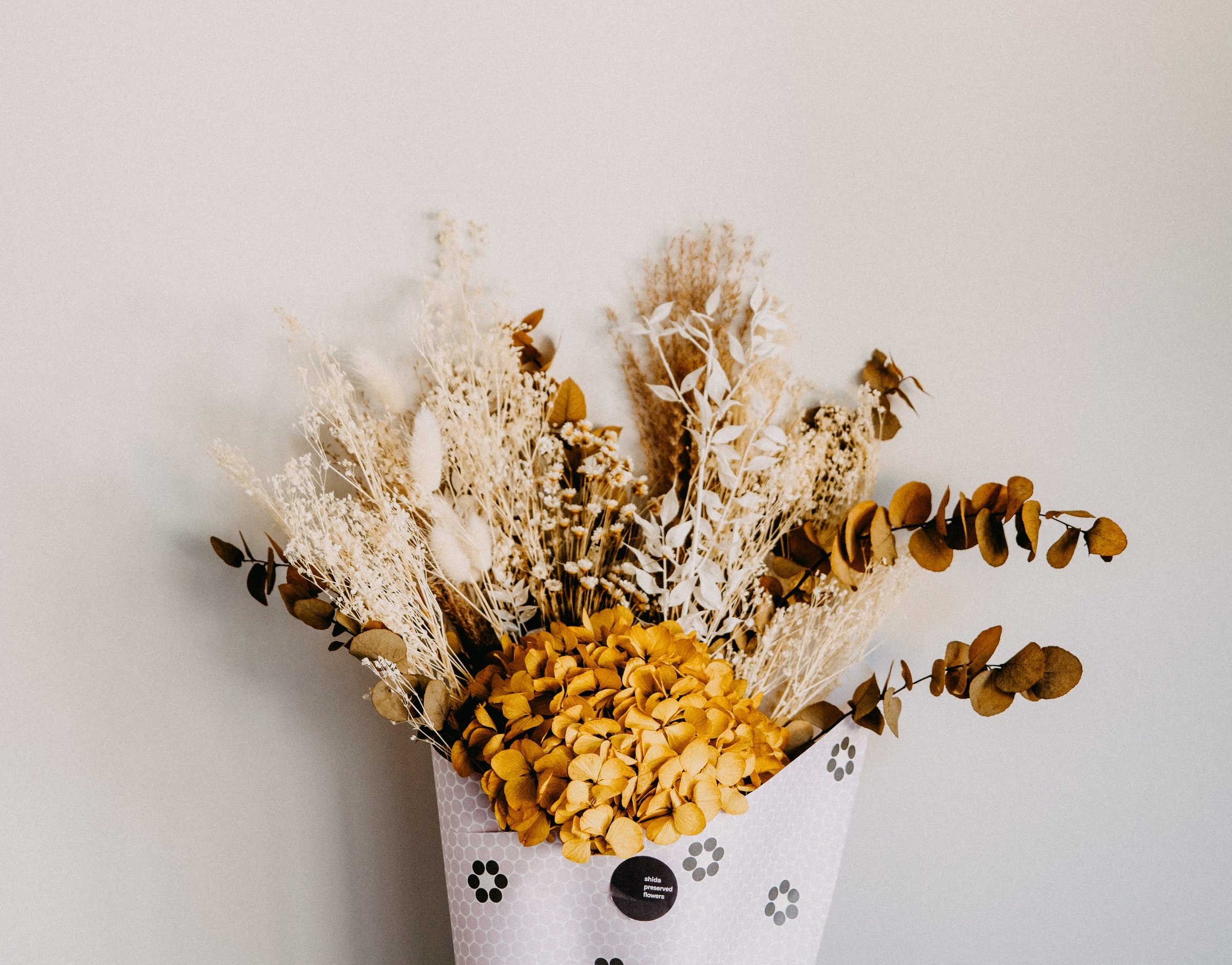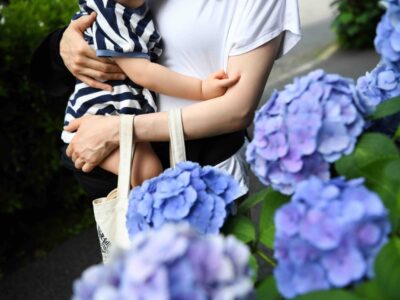Keeping flowers around the home is an elegant and natural way to adorn any space. Despite their beauty and fragrance, freshly cut flowers are sometimes not the most sustainable choice due to their finite lifespan and repeated need for replacement.
Fortunately, dried flowers offer a similarly enchanting and organic feel to fresh flowers with a slightly more relaxed and earthy ambiance but offer a significantly longer period of use. Some flower types may even be displayable for months at a time.
Finding pre-dried flowers can be oddly challenging, but making them at home is rather simple and offers a fun, do-it-yourself project, creative outlet, or gift idea – all while being sustainable!
What you’ll need:
- Cut Flowers
- Rubber Bands
- Silica Gel
- Paper Towels
- Hooks and string (for hanging flowers)
- Paper clips
- Pruning shears or kitchen scissors
Making your own dried flower arrangement starts with choosing the right flower type. Some kinds of flowers lend themselves more easily to drying, while others may take longer to dry out fully.
The best flower choices for drying: Generally, flowers that are low in water content, called sedum, will dry more readily. Some favorites that are easily available from a grocery store or florist include:
Sundaze Blaze Strawflower
Strawflower is the star child of dried flowers due to its low water content in its blooms and ability to dry itself out rather thoroughly. For that reason, strawflower is an excellent choice for individuals just beginning their dried flower journey. These orange and red flowers with gold notes add a great pop of color to any room, even in their dried form.
Lavender
A staple of any calming home, lavender is an easily obtainable and quite sightly choice that will always be an in-style option for decor enthusiasts. A strong companion plant and excellently compatible with shorter-stemmed blooms for a balanced aesthetic, lavender is a must-have in dried arrangements.
Rose
It may not smell as sweet in any other form, but roses remain a timelessly opulent option for drying, providing great dimension and intrigue to any arrangement. Roses also tend to be a bit pricier and don’t bloom for too long, so keeping them in dried form is an excellent way to justify their cost.
Baby’s Breath
Another great companion plant, these are an easy and light complementary option that will make your groupings voluminous and bright. Baby’s Breath is excellent to incorporate into your arrangement if you’re looking for a more earth-forward, stemmed look with a minimalist vibe.
Hydrangea
These summer blooms offer a rich density to any dried grouping and come in various colors. They are excellent as a pillar of the arrangement with their larger profile and easy drying properties.
How to dry flowers:
- Flowers should be dried in their adolescent stage prior to blooming. Some florists recommend cutting your flowers for drying in the late morning after the naturally occurring morning dew phase has been completed. Stems should be cut above where they currently are, retaining 1-2 inches of the light area of the stem.
- Once the fliers have been clipped, the light section of the stems should be securely wrapped with a rubber band. Then, a paperclip can be affixed to the band to serve as a hook. A piece of string or clothing line may be drawn through the makeshift hook.
- Hang the flowers with blooms facing the floor in an area where they won’t be disturbed, like the back of a door or in a closet. Hanging them away from sunlight (and prolonged artificial light) will help ensure their colors don’t fade as dramatically while drying.
- After hanging the flowers in that spot for about 10 days, take down and prune as needed before arranging. It will be normal for some flowers not to make it through the dying process, so don’t be discouraged.
Optional: If you don’t have more than ten days to wait for the flowers to dry, try using silicone gel, a granular substance, to accelerate the process.
Silicone gel is available at most craft stores. Use a clean Tupperware container and put a layer of the gel at the bottom. Lay flowers in a container and sprinkle with more gel. Then, close the container and leave it closed for about 5 days. Be cautious using silicone gel, as it is harmful when ingested and should not be kept about food or young children.
Above all, remember to have fun and enjoy making your own unique, sustainable arrangement!





